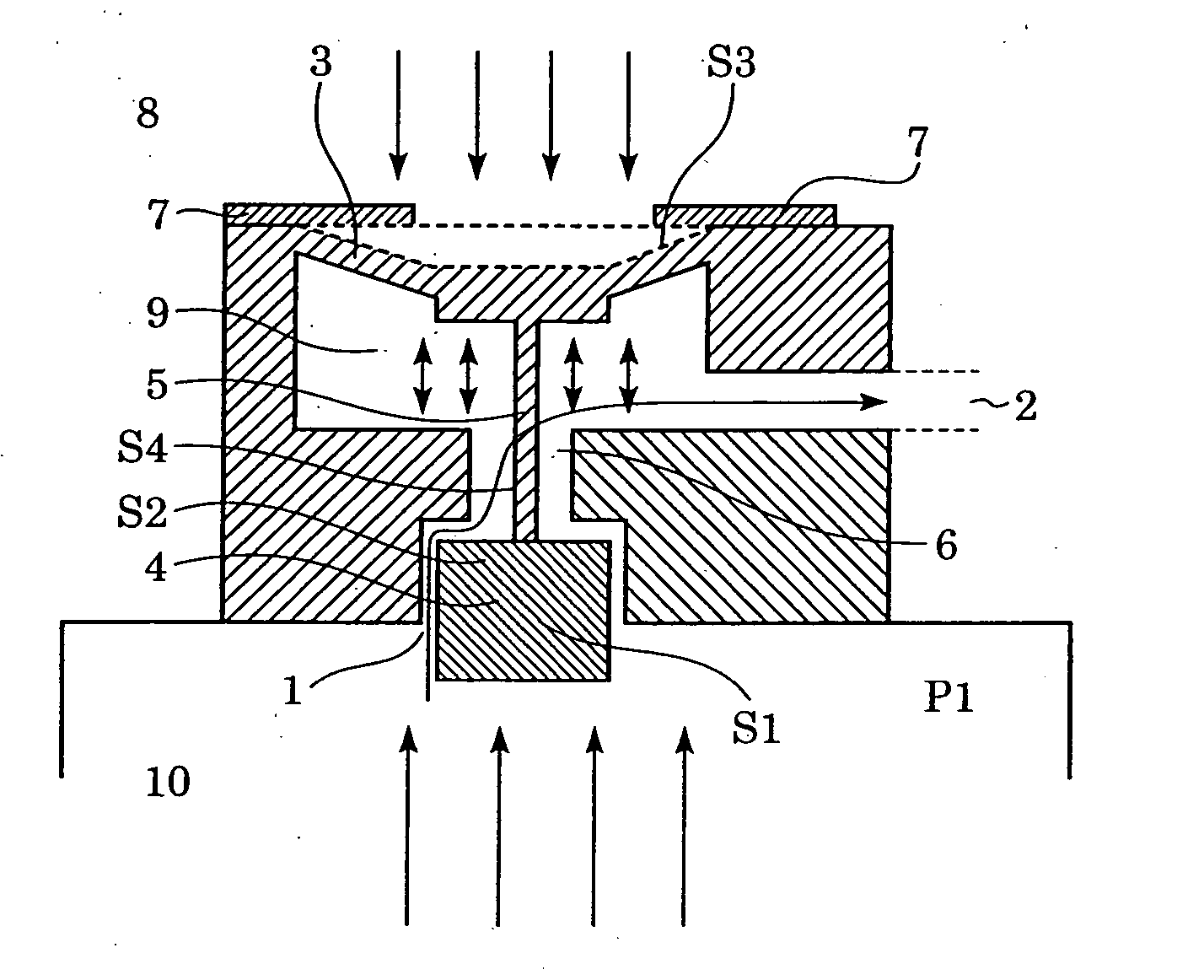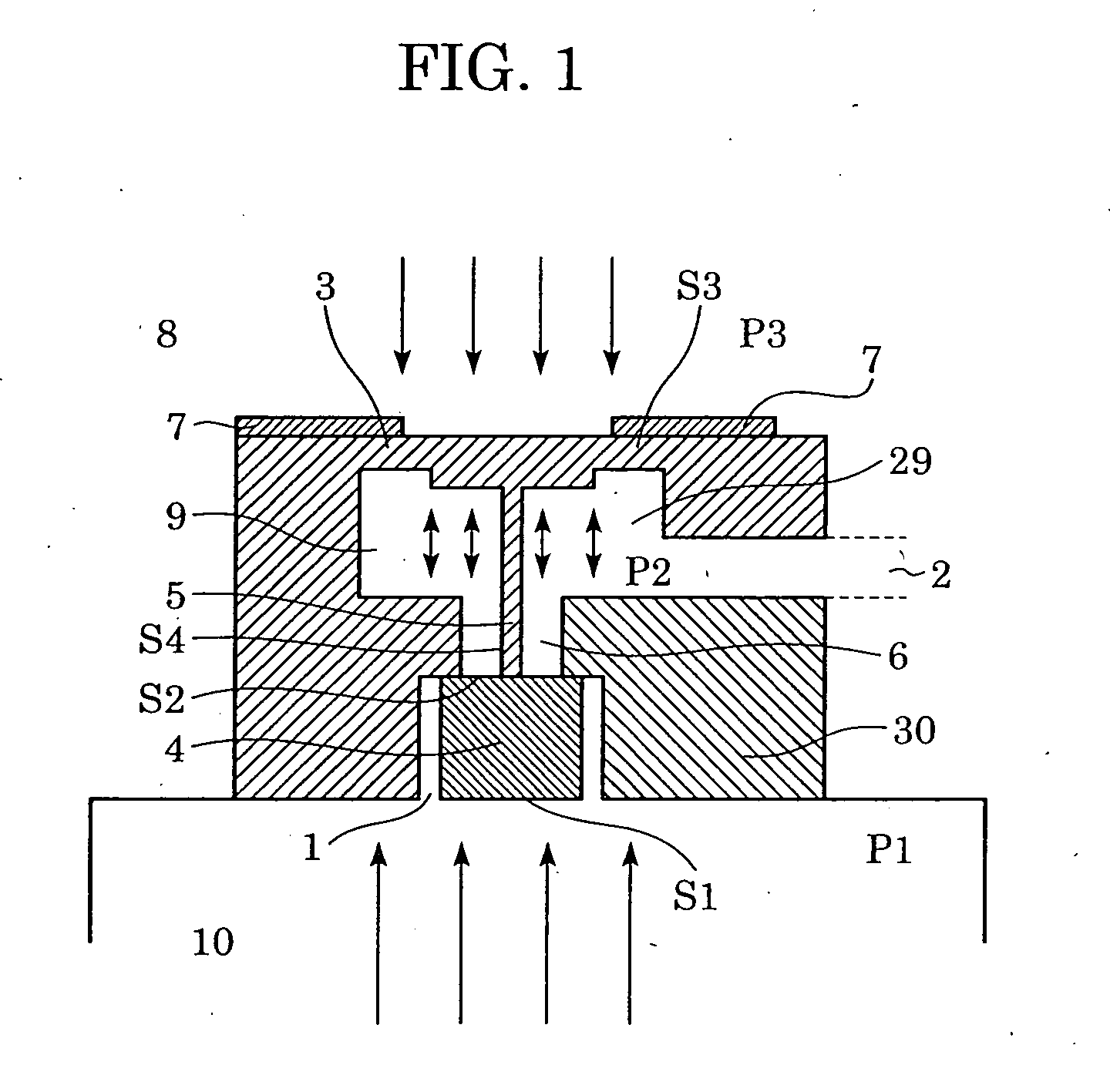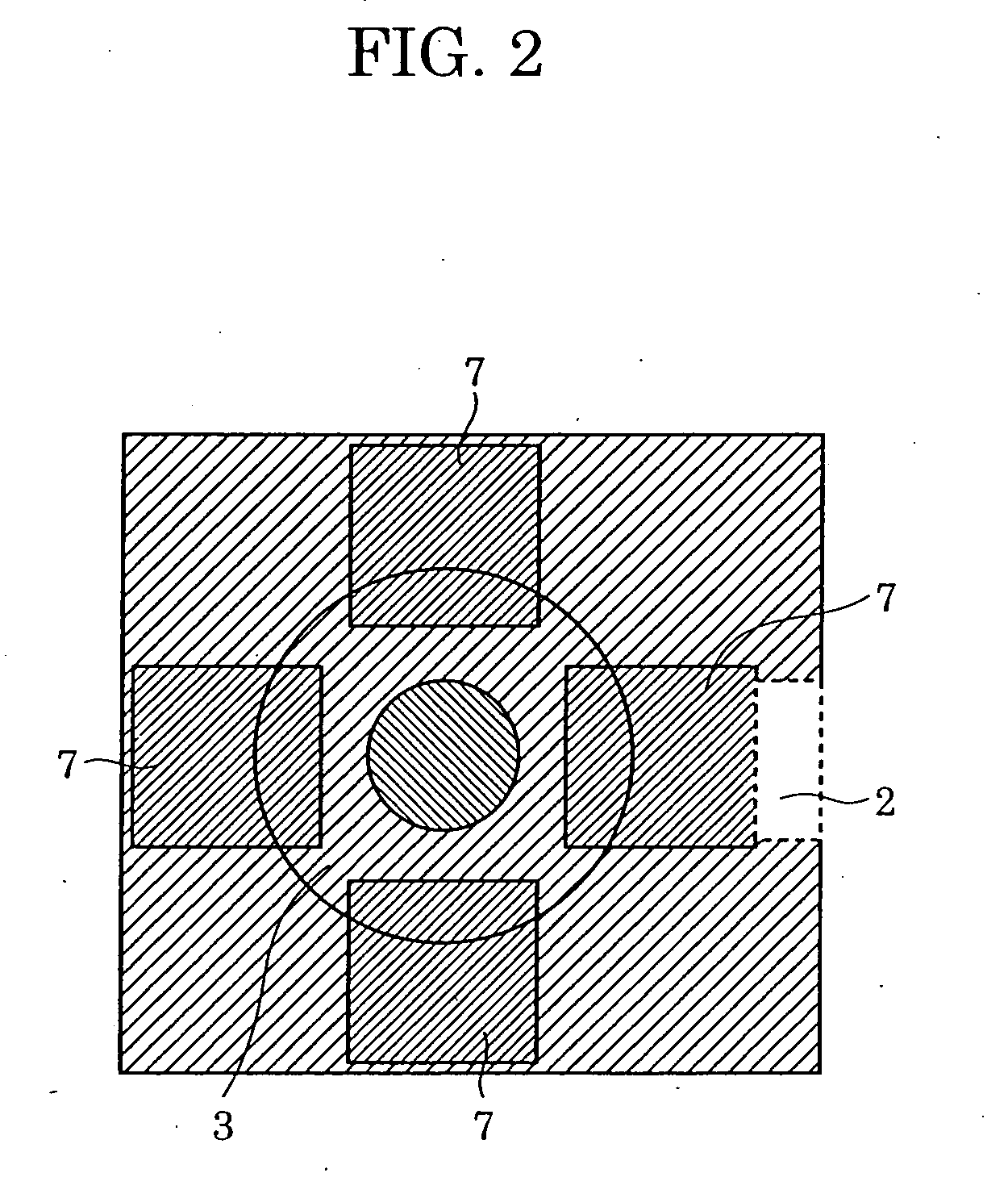Valve having valve element displaced by at least one of a movement of a diaphragm and a movement of an actuator, and fuel cell using the valve
- Summary
- Abstract
- Description
- Claims
- Application Information
AI Technical Summary
Benefits of technology
Problems solved by technology
Method used
Image
Examples
example
[0053] Hereinafter, the present invention will be described in detail with reference to the case in which the valve of the present invention is applied to a small fuel cell. However, the present invention is not limited to the small fuel cell.
[0054] As an effective example of the valve according to the present invention, the case will be described in which the valve of the present invention is used for a small fuel cell which is mounted in an electrical device such as a portable device. FIG. 11 is a schematic view showing the case in which the valve of the present invention is applied to a fuel cell. A fuel cell 17 is composed of a power generation portion 19, a hydrogen storage container 20 having a hydrogen absorbing alloy, a valve 18, and an exhaust valve 21. In this fuel cell, the valve 18 is provided at a connection portion 25 between the power generation portion 19 and the hydrogen storage container 20, and the exhaust valve 21 is provided for the power generation portion 19....
PUM
 Login to View More
Login to View More Abstract
Description
Claims
Application Information
 Login to View More
Login to View More - R&D
- Intellectual Property
- Life Sciences
- Materials
- Tech Scout
- Unparalleled Data Quality
- Higher Quality Content
- 60% Fewer Hallucinations
Browse by: Latest US Patents, China's latest patents, Technical Efficacy Thesaurus, Application Domain, Technology Topic, Popular Technical Reports.
© 2025 PatSnap. All rights reserved.Legal|Privacy policy|Modern Slavery Act Transparency Statement|Sitemap|About US| Contact US: help@patsnap.com



